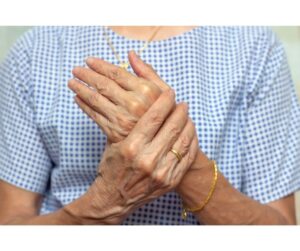What is Peripheral Neuropathy?
Peripheral neuropathy is a condition that affects the nerves within the hands, feet and arms. Diabetes is the most common cause of peripheral neuropathy in the UK with an estimated 1 in 10 people aged 55 or over, affected by this. Having high levels of sugar in the blood starts to damage the tiny blood vessels that supply the nerves, which can then start to cause pain and numbness. Smoking, regularly drinking large amounts of alcohol, and being over the age of 40 can increase your risk of developing peripheral neuropathy

What are the symptoms?
There are early warning signs that can indicate peripheral neuropathy is developing and you should see your GP straight away to help slow down the progression of the symptoms:
• Pain, tingling or loss of sensation in the feet
• Loss of balance or weakness in hands, feet, arms etc
• A cut or an ulcer that is not healing
Individuals with diabetes should have regular check-ups, especially a foot care assessment. The most common symptoms are:
• Pins and needles in the affected body part
• Numbness and less able to feel pain or changes in body temperature, particularly in your feet
• A burning or sharp pain, usually in the feet • Feeling pain from something that should not be painful at all, such as a very light touch
• Loss of balance of coordination caused by being less able to tell the position of the feet or hands

The symptoms can be constant, or they can come and go. The pain can be an unpleasant experience which can affect a person’s quality of life, general health, psychological health and general well-being. Pain symptoms are common in between 16-26% of people with diabetes.
What are the treatment options?
It is possible to manage the symptoms and stop peripheral neuropathy from developing further by keeping blood glucose well controlled. This will now cause the condition but can stop it from developing further and making it worse.
Medications can be prescribed to help control the symptoms, but speak to your GP or diabetes team as a referral to a specialist pain management clinic.
References
Jensen TS, Backonia MM, Hernandez Jimenez S, Tesfaye S, Valensi P and Ziegler D (2006) ‘New Perspectives on the Management of Diabetic Peripheral Neuropathic Pain’, Diabetic Vascular Disease Research, 3(2), pp. 108-119. NHS (2022) Peripheral Neuropathy. Available at: https://www.nhs.uk/conditions/peripheralneuropathy/ (Accessed on 20 December 2022).